Amanda Milligan
More posts from Amanda Milligan
Even when you’re excellent at making the sale, you still need people to know you exist in the first place.
Content is excellent at making the case for your product or service, but it also excels at providing value to potential customers in a more tangential way, introducing them to your brand and building awareness and authority.
Here’s how utilizing content marketing and digital PR can make huge strides in getting your brand name out there.
Ranking on-site content for awareness keywords
When on-site content you created ranks well in the search engine results pages (SERPs), that doesn’t just mean you get more traffic (although that’s certainly a major benefit).
You’re also getting your brand name in front of searchers because you’re appearing in the results. You’re building authority because Google appears to believe you have the best answer for their query. You’re giving the searcher and answer to their question and beginning to build trust.
So how do you know which keywords/topics to target and what kind of content to create? You perform keyword research, which basically means examining what keywords people are searching for, how many people search for them per month and how hard it’ll be to rank for them.
Google Ads Keyword Planner provides this information, but you can also use Chrome plugins like Keywords Everywhere and Keyword Surfer or free tools like Ubersuggest.
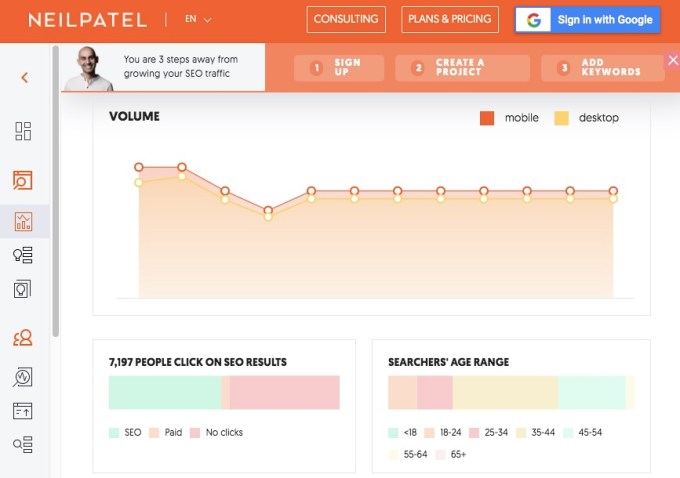
When your goal is to build awareness, it’s important that the keywords and topics you target have high volume. In other words, they’re searched a lot. Awareness objectives mean reaching as many people as possible so more people know that your brand exists and begin to understand what it’s about.
However, you have to balance this out with the competition. Some tools show you how difficult it could be to rank for a keyword through a competition score; essentially, it’s comparing the strength of the content already ranking and the authority of those brands and seeing how tough it would be for you to surpass them.
The awareness content you should create is in the sweet spot of being something related to your brand, highly searched for and also not too difficult to rank for.
Let’s look at an example of on-site awareness content. According to Keyword Surfer, the search for “best sci-fi books” gets about 12,100 searches in the U.S. per month. Not bad!
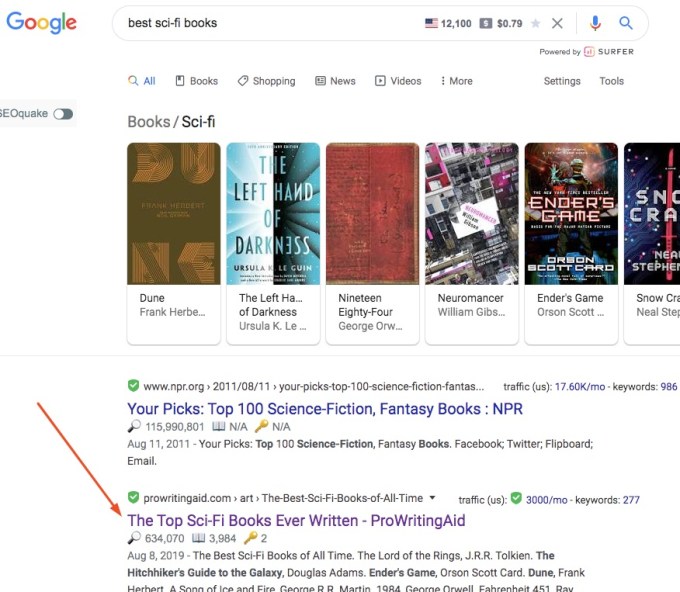
At the time of writing this, ProWritingAid’s article on the best sci-fi books holds the result right after NPR and the Google snippet showing a horizontal list of books. ProWritingAid provides tools to help writers write, so why was it a good idea for them to create this content?
Because people who read sci-fi probably have a decent overlap with people who want to write sci-fi. They’re getting the attention of readers who now know they exist in the hopes that someday they might convert, and the odds are decent since thousands of people search for this keyword every month.
There are exceptions to only seeking high-volume keywords, of course, as there always are in marketing. If a topic is newer, don’t be afraid to try to rank for it even if the volume is registering lower than you’d expect. You see this happen a lot with keywords that include that particular year; if it’s performing well for previous years, it’ll likely perform well for this year, too.
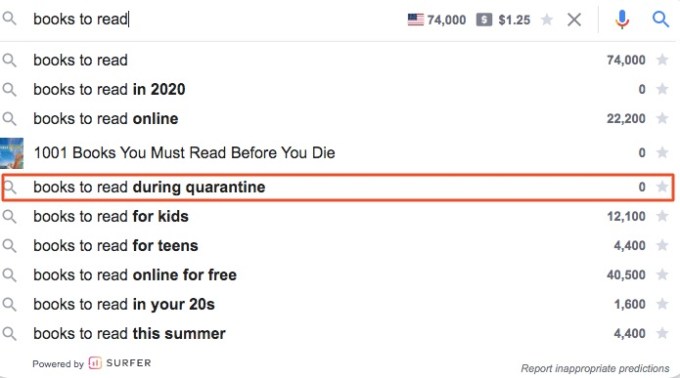
In the case of the keywords above, you’ll see the query related to quarantine isn’t as popular as the more general ones, but that doesn’t mean it wasn’t being searched for! I always make room for more timely options if they make sense for the brand.
Earning coverage on news publications
If we were to separate the top of the funnel into additional sections, this would be, well, the top of the top of the funnel.
If your marketing goals include getting your name out there to the general public while simultaneously building your brand’s authority, then creating new studies, surveys, and reports and pitching that newsworthy information to publishers is a fantastic way to accomplish this.
Why does Fractl do this? Because we end up earning coverage for our clients like this:
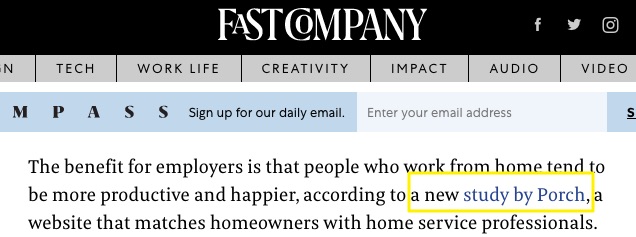

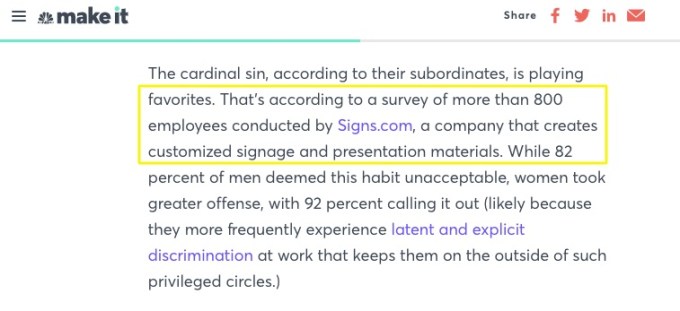
Your brand ends up mentioned in a very authoritative way — as the source of an article’s information on a respectable publication. And then, of course, more often than not you get a really high-quality backlink, which helps uplift the authority of your overall site (and improves the chances your on-site content ranks in the SERPs).
How can you create content like this? Consider the following:
- Do you have internal data that would be interesting/useful to your audience?
- After doing your keyword research, what are questions you can answer with data? How can you find that data and analyze it in an easy-to-understand way?
- Can you poll your audience to see what they’d be interested in or to combine their insights into a report that unveils something new about a perspective in your industry?
I’ve explained in a previous Extra Crunch post about how to choose the best content idea, but it’s good to start with a hypothesis you want to prove and an idea of what data will allow you to explore that idea. Just be sure to remain flexible with whatever the data shows; never spin your content just to have it say what you want it to say.
Here’s an example of what content can look like when you invest time into collecting, analyzing and displaying interesting data.
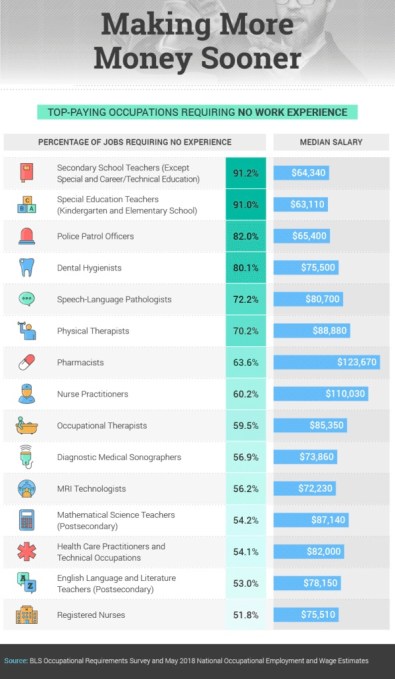
I trimmed the graphic down a bit, but as you can see, all the information you need is there, and it’s easy to quickly glean the takeaways. You don’t need to do anything incredibly fancy or sophisticated to create something compelling and useful.
This is one image from a project we created for our client that analyzed the Occupational Requirements Survey by the U.S. Bureau of Labor Statistics to explore what jobs paid the most and required little to no experience. It got covered on CNBC, Market Watch, Reader’s Digest and more.
It goes to show you there’s plenty of interesting information online just waiting to be distilled in a way that’s useful to readers. You won’t be able to break news often, but you can create your own newsworthy content by exploring new data or reexamining existing data in a new way.
Seeing it all work together
When you create top-of-the-funnel content in these two different ways, they complement each other. Getting off-site media coverage and backlinks bolsters your brand awareness and your site’s authority by generating top-tier backlinks. That in turn increases the chances your on-site content will rank. And when you rank for more, people are more aware of you, making it easier to pitch writers, as they’re more likely to trust your content.
All you have to do is come up with the right idea and then invest in the process. If you do this over the long term, you greatly increase your chances of growing your organic traffic and your brand overall.































Comment